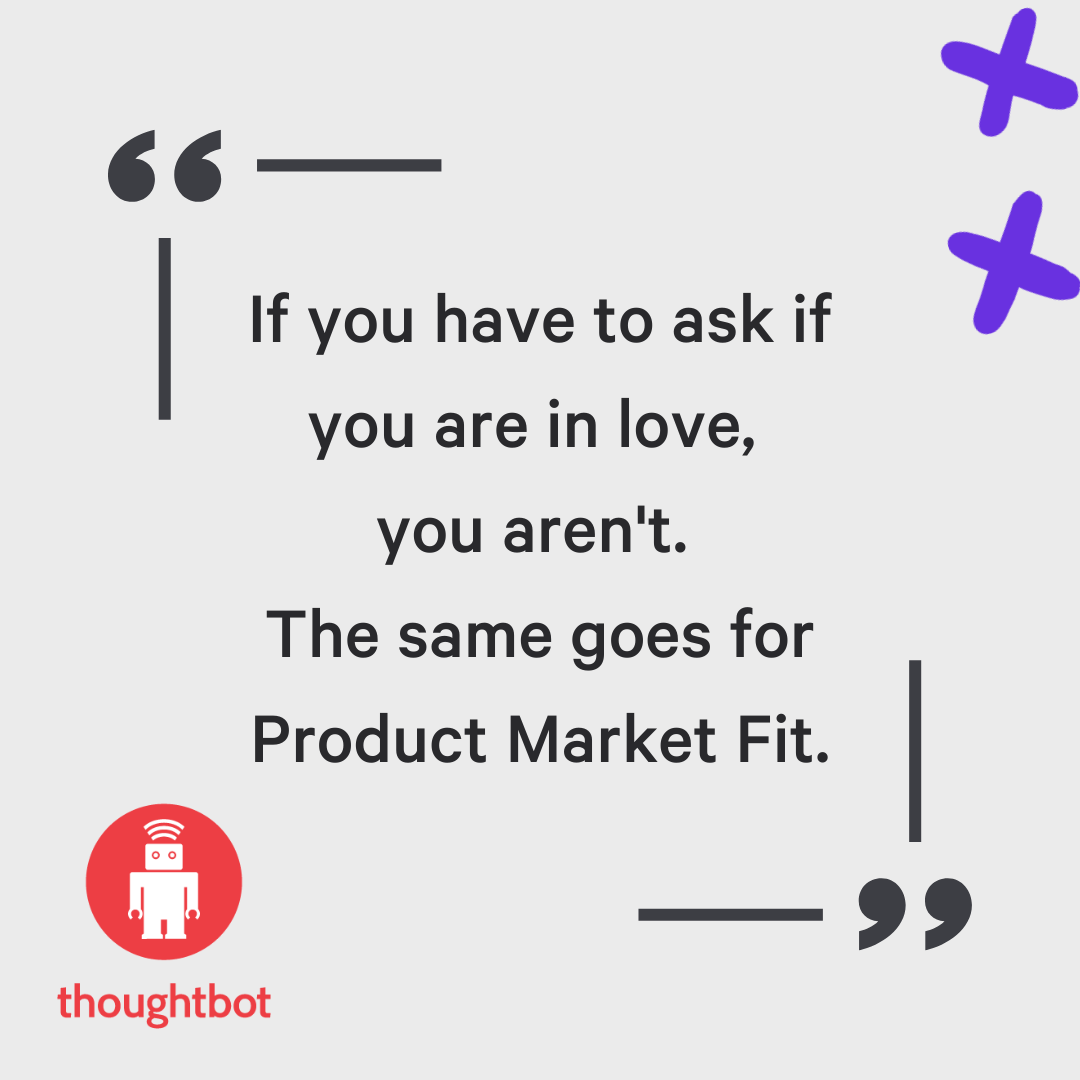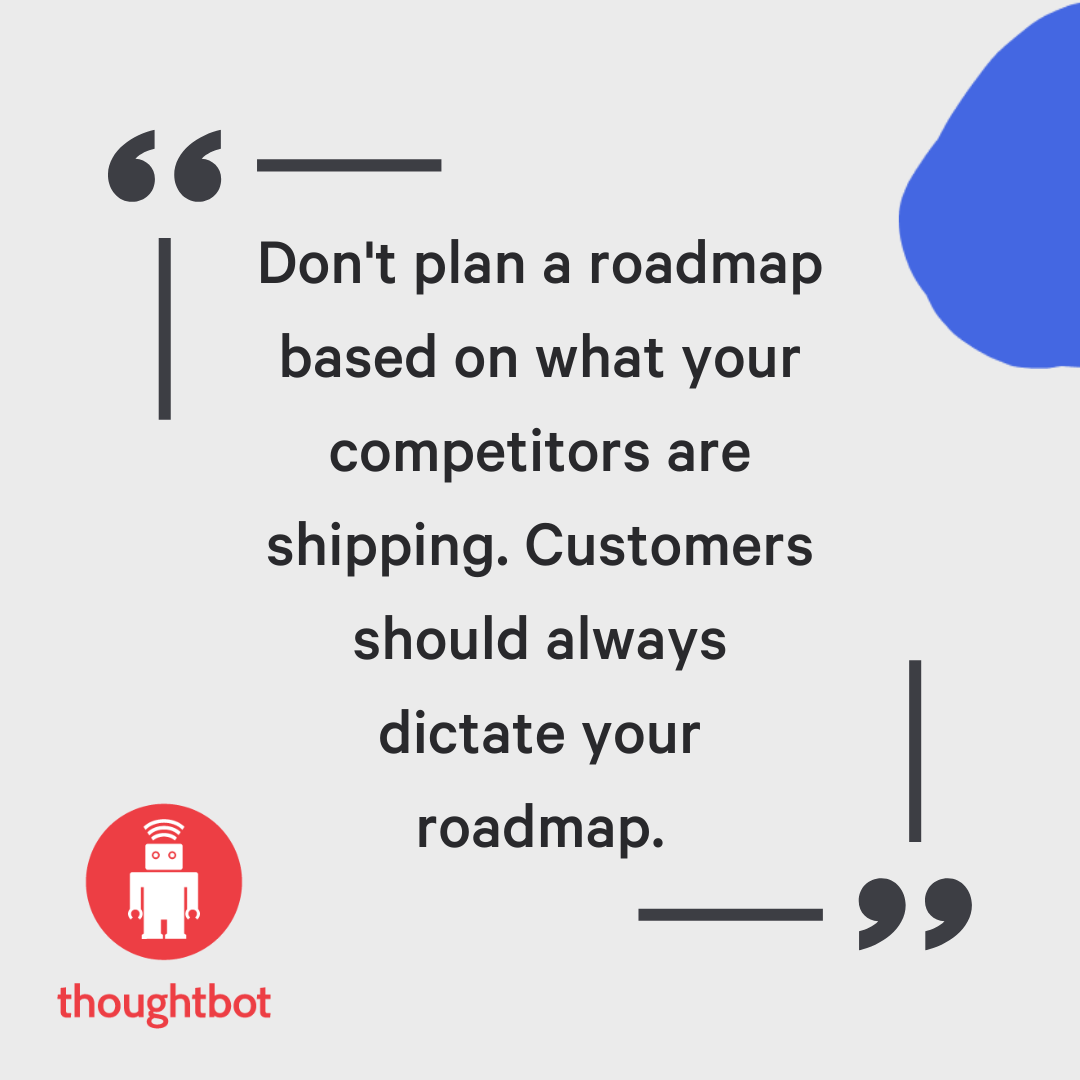As product strategy leaders, we cannot overemphasize the power of using research and validation to support both outlining the right new product and uncovering impactful optimizations for an existing product. thoughtbot recently shared our strategies for research & strategic insights efforts in an Ask-Me-Anything panel event. Here are some of the big points and takeaways we hope will help you in reaching your goals.
What is validation?
Another way to describe validation is “learning” - it’s the processes you go through to understand your identified problem, and then to apply a research and testing methodology to get answers. A few questions you may want to explore:
- Does the problem exist beyond just you or your friends?
- Does a market exist for your solution?
- Do you have viable ways of solving it that they will recognize/accept?
- Does your idea address the actual problem/pain?
- Are my interpretations of the problem and my vision for solving based in reality?
How long does validation take?
Overall effort depends on the situation and what work is needed, whether that be research, user interviews, or launching an A/B test. Validation isn’t a step you do once - it should be a repeated part of your product’s holistic process. Even for an existing product that has some traction, you should be checking assumptions you are making as things like competitive landscape or customer needs change.
What is product market fit?
Product market fit (PMF) is the foundation of your business. You will have achieved this when you are delivering value. Value doesn’t have to be revenue, it could also be new user sign ups, content, vitality, etc. This value should be driving a successful business outcome, again may be profit but could be other goal posts, like acquisition. To put it in more visual and visceral terms: PMF feels like chasing a boulder down a hill, versus pushing a boulder up a hill.

How do I determine product market fit?
There is no one right answer or task, but you need to find the right combination of value, need, solution, and audience. A few suggestions to get there:
- Really talk to and understand your customers (market)
- Look for a pattern or signal in your findings.
- If you can’t find one, it might be time to revisit:
- Your target audience - is it focused enough?
- The questions you’re asking - are they leading or too broad?
- Other solutions in the space that are meeting the perceived need - are you differentiating enough?
How do I find customers?
- First, decide who your customers are and be narrow with the defined persona.
- With the audience defined, identify the right channels to reach them. This will vary by the product—anywhere from business conferences, to online groups, to brick & mortar places like events, gyms, daycares, etc.
- As a founder, get into the mindset that talking to customers is interacting with “your people” even if it’s outside of your comfort zone. You’re excited about your idea, they’re motivated to talk about the problem they’re experiencing. If you earnestly want to learn more about them, it’s easy.
- A great initial indicator of validity of the problem is the willingness for people to speak to you about it.
- Engage potential customers in various ways and incentivize them: for example, start a podcast and ask them to speak on it, provide gift cards for interviews, invite them to a customer advisory board.
Are there other formats of customer research that are lower touch but still valuable?
- The effort you put in determines the impact you get out. So it’s typically better to use higher touch methods.
- Low touch methods like surveys can have low engagement rates and must be really well-crafted to elicit a usable response.
- Creating landing pages for different search terms and linking those to paid search ads is a lower effort way to get potential users signed up for a beta version and suss out which search terms that audience is using to find solutions to their problem.
Related Posts
How should I analyze and keep track of competition?
- Identifying competitors can be (1) positive validation that there is a market for what you’re doing or (2) negative validation that the market is saturated with companies and profit margins are getting small.
- Determine who the real competitors of your solution are and how you should compare. Review their website and how they engage with their target users.
- Using things like a SWOT analysis can help you draw conclusions.
- Document everything you’re learning and perform a deep dive review. Don’t fixate on any key or surprising input, but pick out patterns that emerge throughout your body of data.
- Define an action plan based on those patterns. In some cases the action might be doing more research.

How should I test with users?
A few best practices for user testing that thoughtbot follows:
- Facilitate moderated tests using an interview script with open ended questions designed to elicit answers on your assumptions.
- Leverage tools like Userinterviews.com or Usertesting.com.
- Employ tools, like Fullstory, where you can watch them using your product.
- Listen to natural conversations as a way to get input from users who may be less willing to talk to you directly. Subscribe to the subReddit on your product.
- Consider community building - start a Discord and keep an eye on the conversation.
- Don’t rely on the founder to have these conversations. Funnel feedback through your teammates for diverse perspectives and insights. (ex; a pod of product, sales, and customer service folks meeting monthly).
- Other lower touch ideas:
- In-app survey offering a gift card for 30 minute interviews
- Hang out where they hang out and talk to them
- Sponsor events or a conference
- If someone reaches out to you to ask a question or complain, respond immediately and ask if you can chat 1-1.
Related Posts
Where does an analytics strategy support user research?
Just as important as instrumenting your tool is defining your success metrics and ensuring the team is aligned on them. Once you’ve done that, it’s still challenging to be thoughtful about analytics early on because you only get the coarsest data. A few tips for your analytics strategy:
- Consider analytics one piece of the whole picture of what is going on with your users.
- Implement tools iteratively and make sure you’re tracking and diversifying.
- Avoid using analytics to inform a new feature idea.
- Analytics are a great way to identify issues or drop off. They should raise red flags and be a signal for further investigation (& potential research).
How do you start synthesizing once you have all this user research?
- It’s easy to get distracted by lots of shiny ideas that are surfaced in your feedback—and any one of those might matter one day so tuck them away. But your focus should stay on what is the most important next step right now, referencing those success criteria the team aligned on.
- Refer to your roadmap, which has been validated by patterns you’ve found in user input and testing, and use your new research in addition to what you already know to plan the next most important feature or improvement.
- Practice on the input/testing/act cycle will make you better at filtering out the noise.
Related Posts
Thank you to those who were able to join us for the productive conversation. We love to share what we’ve learned so check out these videos and readings on product research & strategy:
- Event recording
- Customer Discovery Playbook
- PDS Guide
- Purpose Built
- Giant Robots podcast - a new episode featuring Director of Product Strategy, Jordyn Bonds, will be dropping soon!
If you have an initiative you want to discuss further, please drop us a line here.